|
Jan
30
2023
|
|
Posted 2 years 331 days ago ago by Admin
|
|
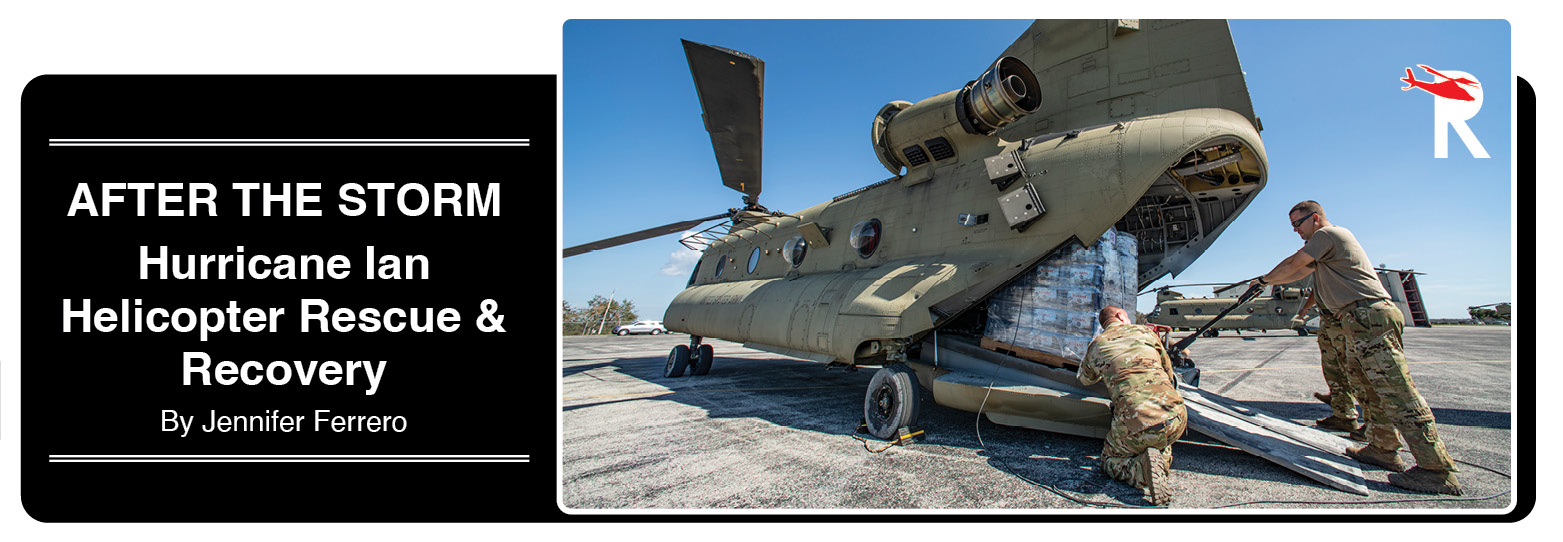
Hurricane Ian made landfall in western Florida on 28 September 2022. The Category 4 storm rocked various communities, causing flooding, structural damage, debris, downed trees, high winds, heavy rain, isolation of residents, and death. The death toll varies depending upon the reporting agency, but hovers between 118-130 lives between Florida, Cuba, Virginia, and the Carolinas. Ian was the deadliest hurricane to strike Florida since The Great Labor Day Hurricane of 1935.
Helicopter rescue following the hurricane was primarily conducted by the National Guard and the Coast Guard. Private groups were also involved.
One private company was Fair Lifts of Atlanta, Georgia. Fair Lifts has contract relationships with helicopter operators, pilots, and ground cranes throughout the region and operates throughout the U.S. and Canada. They contract all work and use the following aircraft: EC130, R-44, R66, and Bell 206L3. The company, which provides various commercial helicopter services, such as heavy lifts, aerial surveillance, construction lifts, and HVAC placement, also manages emergency services via helicopter during natural disasters.
The CEO and founder of Fair Lifts, Asta John, says, “When a storm comes like this, other things are set aside, and it becomes a priority.” John’s company is sometimes tasked when the Coast Guard can’t attend to the rescue.
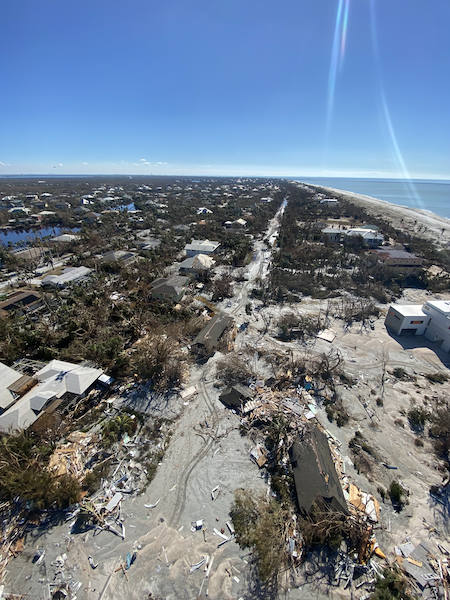
Coastal damage in Southwest Florida in the wake of Hurricane Ian. (Photo: Fair Lifts)
He notes that they were asked to go to Sanibel Island. “There weren’t many resources to help them and roads were out.” He isn’t sure how many helicopters were sent to Sanibel Island, but he says there were multiple flights to pick up people and pets. The Sanibel Causeway, which connects to Sanibel Island, was destroyed, cutting off access to the island for 6,400 residents.
“We were receiving Coast Guard reports at that time,” John says. He heard that there was an older couple stranded on the island. They were told that the hurricane had obliterated the property and that it was no longer there. However, they deployed a helicopter to their property, which was still there. “We were able to get them,” John says about the couple. “We did a combination of rescue and survey flights,” he adds. Ultimately, John thinks they rescued about 10 people.
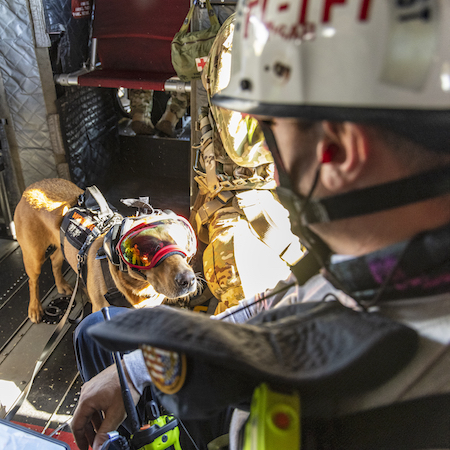
A member of Miami-Dade Fire Rescue - Florida Task Force 1, comforts their dog while aboard a CH-47 Chinook helicopter assigned to Company B, 1st Battalion, 111th Aviation Regiment, Mississippi Army National Guard, above Fort Myers, Florida. The 111th is deployed to South Florida to respond to the devastation of Hurricane Ian. (Photo: Sgt. Jovi Prevot, Army National Guard)
John adds that his company was also on-hand during 2019’s Hurricane Dorian, which was also a devastating storm. “Hurricane Ian, however devastating, paled in comparison to the destruction brought by Hurricane Dorian,” he says. “Our rescue efforts for people in the Bahamas were substantially greater because of the scope of damage and resulting conditions.”
During that storm, risk escalated to require armed security to be present on all flights that landed in the Bahamas. People were desperate to escape, and helicopters have capacity limitations. “We flew only those that had arranged with us to fly, but many others (especially at airports) were keen to commandeer spots on the aircraft we utilized. Combined with the fact that aircraft arrival is apparent to all those in the vicinity, I'm glad that Hurricane Ian's severity didn't compare to Hurricane Dorian,” John shares.
Military Support
The U.S. Coast Guard and Florida National Guard are also involved with hurricane search and rescue. The Coast Guard has 200 aircraft, with helicopters making up 71.5% of its fleet. The Coast Guard has 98 Eurocopter MH-65 Dolphins. According to Wikipedia, “The Eurocopter MH-65 Dolphin is a twin-engine helicopter operated by the United States Coast Guard for medevac-capable search and rescue and armed Airborne Use of Force missions.”
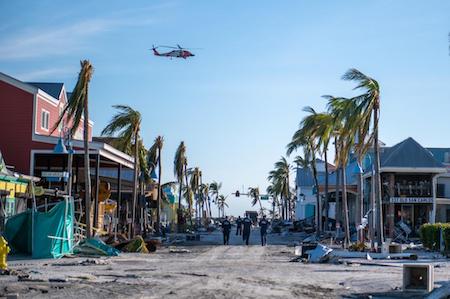
A Coast Guard Air Station Clearwater MH-60 Jayhawk flies overhead while personnel assigned to the Gulf, Atlantic and Pacific Strike teams scan for unaccounted people in Fort Myers Beach, Florida. Coast Guard National Strike Force teams mobilized to areas affected by Hurricane Ian to perform urban search and rescue. (Photo: Petty Officer 3rd Class Gabriel Wisdom, USCG)
There are also 45 MH-60T Jayhawk helicopters in the fleet. The Jayhawk is a multi-mission, twin-engine, medium-range helicopter operated by the Coast Guard for search and rescue, law enforcement, military readiness and marine environmental protection missions.
There are 800 qualified pilots in the Coast Guard. That makes the Coast Guard the U.S. military branch with the highest percentage of pilots in its officer corps.
During Hurricane Ian, Florida Governor Ron DeSantis activated 5,000 members of the state’s National Guard. In addition, 2,000 members of National Guard units from Tennessee, Georgia, and North Carolina were called up to support search and rescue and clean-up efforts.
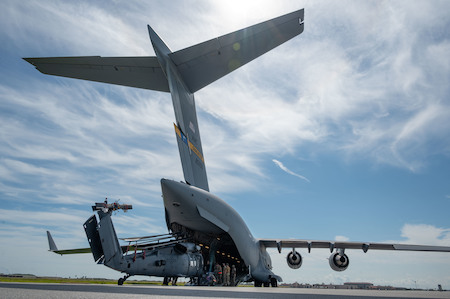
An HH-60G Pave Hawk helicopter is loaded into the back of a C-17 Globemaster aircraft at Patrick Space Force Base, Florida, in preparation for the arrival of Hurricane Ian. The decision was made to relocate the aircraft to areas that would prevent them from being damaged. In less than 24-hours, all of the wing's HC-130J Combat King II aircraft and HH-60G Pave Hawk helicopters were prepared, pre-flight checked, then flown or loaded to be transported off of the installation. This movement was the equivalent of a rapid deployment of the wing's Personnel Recovery Task Force-Heavy, which utilizes multi-capable airmen from across the wing to mobilize rapidly for rescue operations around the world. (Photo: Master. Sgt. Kelly Goonan. U.S. Air Force)
Evacuation missions by the National Guard may include:
- Swift-water rescue (a rescue technique used to evacuate people caught in rapid flood waters).
- The use of tactical vehicles capable of moving through high waters caused by floods.
- Airlift missions in response to hurricanes and other disasters.
- Assistance in the execution of a city or town’s large-scale evacuation plan.
Other supports they may provide include:
- Transporting suppliers.
- Manning points of distribution.
- Clearing debris and setting security perimeters.
- Aiding in evacuations.
Helicopters Help
Fair Lifts’ Asta John says, “There are many ways a helicopter can help those suffering from hurricanes or other severe weather. A helicopter can perform a vital search and rescue mission, survey an area to analyze the extent of damage that occurred, provide emergency lift services, transport people to where they need to go, and take aerial photography or videography.” Furthermore, helicopter search and rescue is one of the most effective ways to find and transport people to safety. Helicopters can also be used to transport cargo in the form of supplies for stranded people or to transport infrastructure like large generators to bring power back up after a disaster.
John says there are different types of helicopters for each kind of hurricane or natural disaster. “It depends heavily on the task at hand, specific certifications, location (factoring in mobilization costs), capabilities (maximum flight range, maximum external load, etc.), and availability. With Hurricane Dorian, the ability to fly over water and flight range were crucial. Many available helicopters weren't equipped to complete the relatively long flight to the Bahamas. For Hurricane Ian rescue flights, availability was the prominent issue. If passenger capacity is too limited, multiple trips can overcome the limitation. However, we are approached with projects that require us to filter our available aircraft heavily. We were approached for a communications tower and truck lift on Sanibel Island, which limited our options to those that can lift 8,000 pounds or more. In that case, we would likely use the following aircraft: S-61, UH-60, Super Puma, CH-47, Vertol 107, and CH-234.”
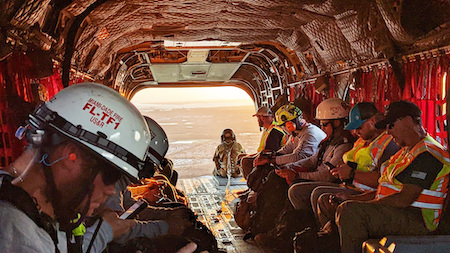
Civilian search and rescue on board a CH-47F Chinook helicopter operated by New York Army National Guard soldiers assigned to B Company, 3rd Battalion, 126th Aviation Regiment heading to a mission on Sanibel Island, Florida. (Photo: Sgt. Samuel Sacco, Army National Guard)
For medical transport via helicopter following a hurricane, many hospitals have helipads where a helicopter can land. In Florida alone, out of 349 hospitals, there are 203 hospitals with helipads. As of mid-October, several weeks after the hurricane, many hospitals in the region, especially in Fort Myers, had severe damage. They still evacuated patients to other locations via air transport to ensure their safety and health.
National Public Radio (NPR) interviewed Mary Mayhew, CEO of the Florida Hospital System. She said thousands of beds were made available statewide to accept evacuated patients, and added that “air transport and ambulances have been deployed from hospitals around the state to support this effort.” Mayhew said, “The destruction in southwest Florida, specifically in the Fort Myers area, is unimaginable. Thankfully, hospitals have been hardening their facilities for years to withstand hurricanes. There is not considerable damage to our hospitals.”
Late Hurricane
Late in the hurricane season (November 2022) Hurricane Nicole made landfall in Florida, only six weeks after Ian. Fortunately there are plenty of options for search and rescue, and airlifting residents offered by the U.S. Coast Guard, Florida National Guard, and private helicopter businesses.
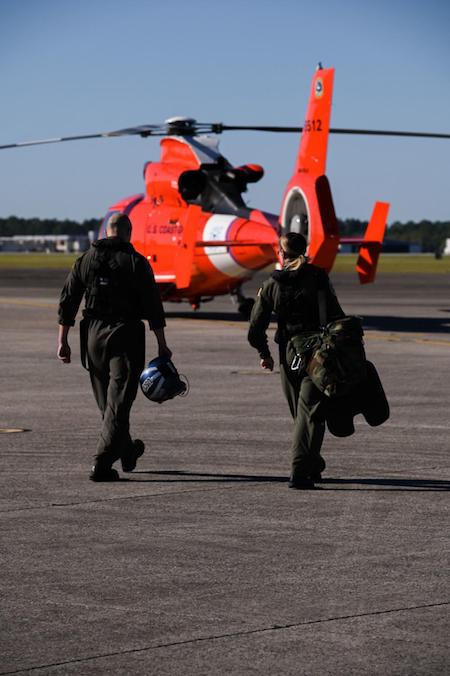
Coast Guard Aviation Training Center-Mobile pilots walk out to an MH-65 Dolphin helicopter to conduct training evolutions in preparation for storm response operations in Mobile, Alabama. Coast Guard assets are staged outside of the predicted path of Hurricane Ian at the Aviation Training Center. (Photo: Petty Officer 3rd Class Riley Perkofski, USCG)
One thing seems sure, ongoing support is needed for residents of coastal towns with increasingly severe and late-season hurricanes. There are opportunities for companies like Fair Lifts and other helicopter operators to provide services to Florida and other states where natural disasters occur.
READ MORE ROTOR PRO NOV/DEC ISSUE
READ MORE ROTOR PRO: https://justhelicopters.com/Magazine
WATCH ROTOR PRO YOUTUBE CHANNEL: https://buff.ly/3Md0T3y
You can also find us on
Instagram - https://www.instagram.com/rotorpro1
Facebook - https://www.facebook.com/rotorpro1
Twitter - https://twitter.com/justhelicopters
LinkedIn - https://www.linkedin.com/company/rotorpro1